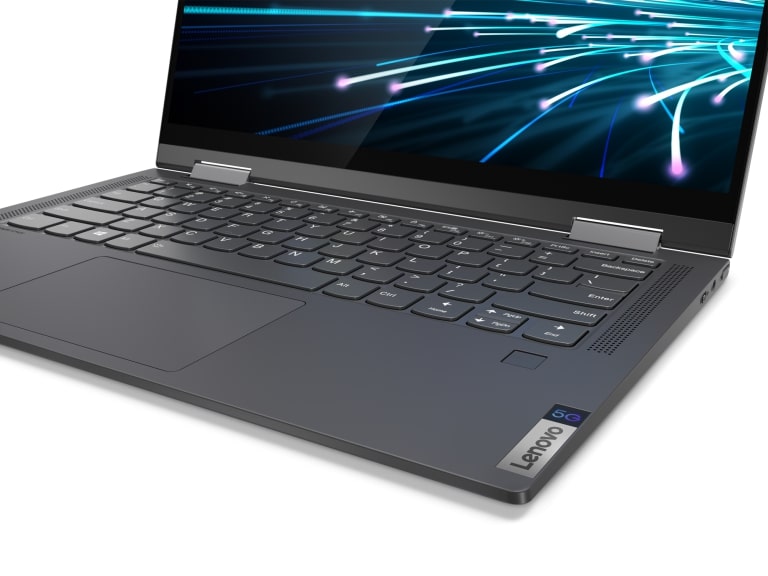There’s no doubt that 5G is the next big thing in technology, and at CES 2020, Lenovo is showing why. The company took the wraps off the Flex 5G — the world’s first 5G-compatible PC, coming in spring 2020 for prices starting at $1,500.
In a press release, Lenovo calls the new Flex 5G part of its journey of bringing “faster, better, simpler, safer, and smarter technology for all.” The Flex 5G supports both millimeter-wave full-band and sub-6GHz
The new Lenovo Flex 5G is powered by the Qualcomm Snapdragon 8cx
Visually, the Flex 5G looks like your traditional Windows 2-in-1. It weighs in at 2.86 pounds, and sports narrow bezels on all sides of its 14-inch IPS touch display. Lenovo also includes a Windows Hello IR camera onboard and an integrated fingerprint reader for added security. The device also supports a digital pen, which means that you can ink on PDFs and more.
Elsewhere under the hood, the Flex 5G also sports Qualcomm Adreno 680 graphics. Lenovo even promises that the Flex
Introducing the world’s first #5GPC: the #Snapdragon 8cx 5G-powered @Lenovo Yoga 5G PC. #CES2020 pic.twitter.com/JSskp0vZRY
— Qualcomm (@Qualcomm) January 6, 2020
Battery life seems to have been improved too, as Lenovo claims that the device can last up to 24 hours for video playback. “5G technology will change entire industries as we know them, disrupting some while helping to launch others. Expect Lenovo PCs like the Yoga
Follow our live blog for more CES news and announcements.
Editors' Recommendations
- What is 5G? Speeds, coverage, comparisons, and more
- Microsoft Surface Pro 9 vs. Lenovo IdeaPad Duet 5i: which 2-in-1 is best?
- Lenovo’s IdeaPad 5i is the first Chromebook with a 120Hz refresh rate
- Is 5G dangerous? We asked an expert
- How 5G is changing journalism





